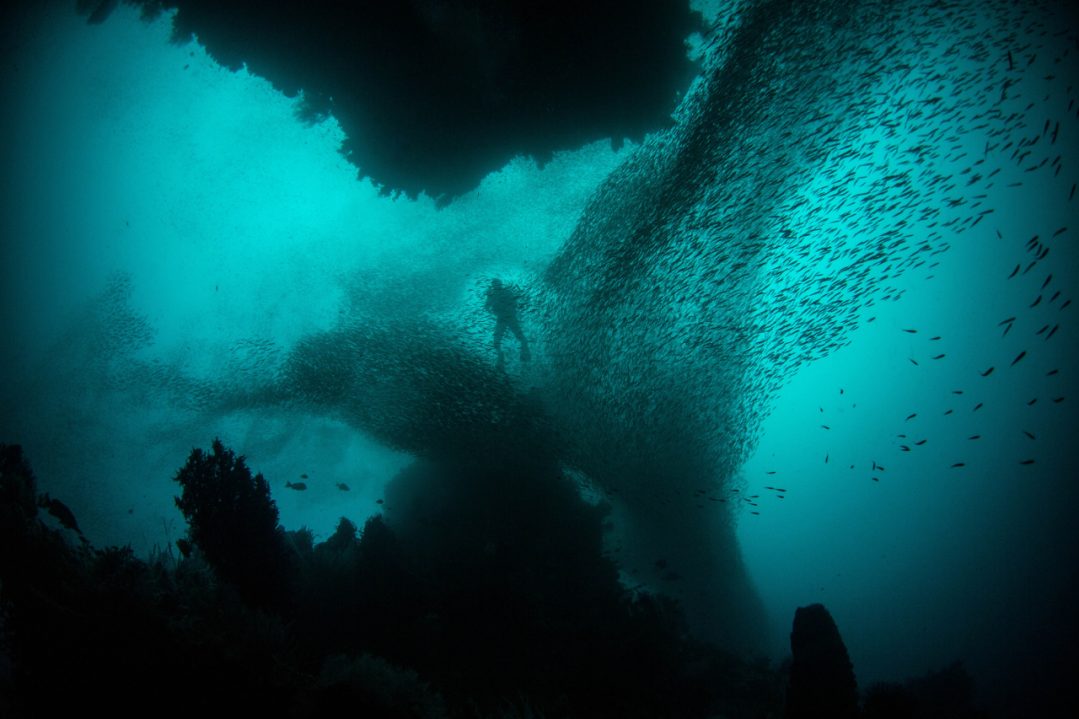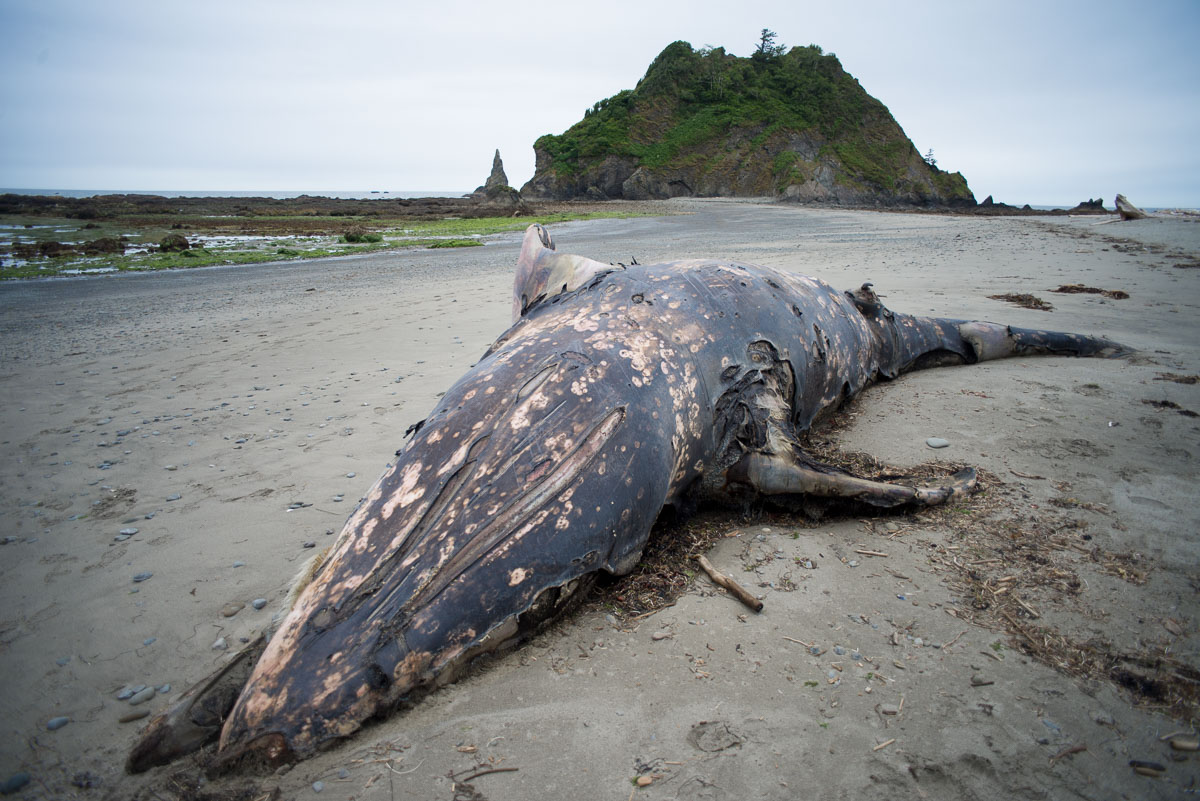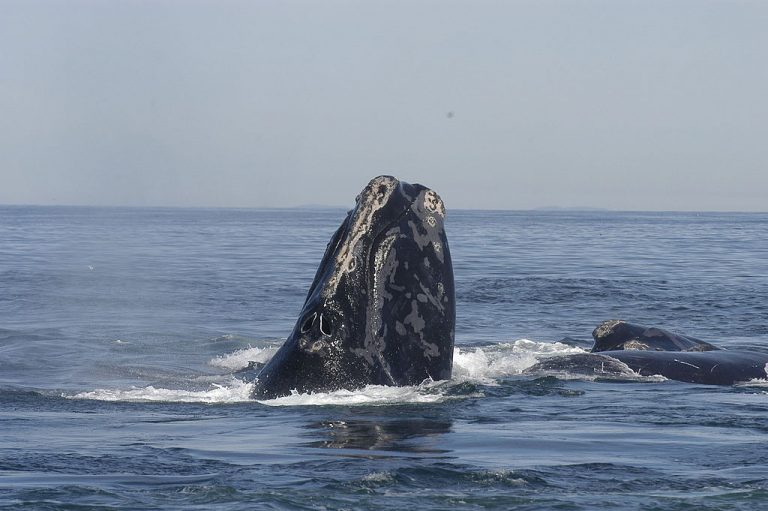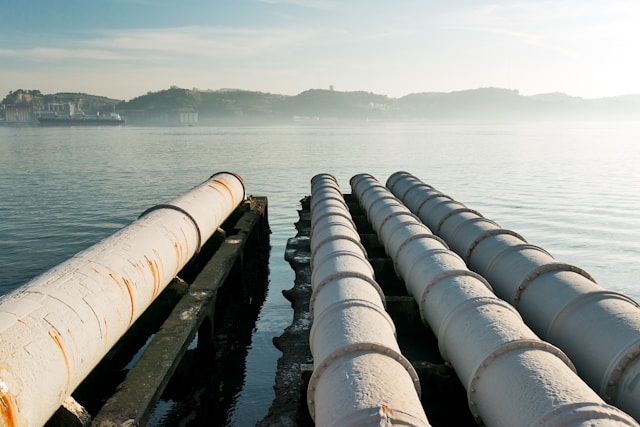
by DGR News Service | Jul 20, 2020 | ANALYSIS, Human Supremacy, Mining & Drilling, The Problem: Civilization
Editor’s note: As industrial civilization devours the natural resources of the Planet, it leaves destruction in its wake. Since this system always depletes the land rather than operating on sustainable yield, it necessitates imperialism of new lands. This piece examines a new frontier in the war being waged against the planet: deep sea mining.
Deep Sea Mining Threatens More Than The Seafloor
Climate and Capitalism / July 10, 2020
A previous Climate & Capitalism article, Capitalism’s growing assault on the oceans, argued that the world is entering “a new phase in humanity’s relationship with the biosphere, where the ocean is not only crucial but is being fundamentally changed.” It cited research that described and graphed capital’s growing drive to industrialize the oceans and sea beds — a process that some scientists have dubbed the Blue Acceleration.
A paper published this week in the Proceedings of the National Academy of Sciences adds more urgency, showing that deep-ocean mining poses significant risks to the vast mid-water ecosystems that lie far above the sea bed sites where mining is planned. The following summary is based on materials provided by the University of Hawaiʻi.
Interest in deep-sea mining for copper, cobalt, zinc, manganese and other valuable metals has grown substantially in the last decade and mining activities are anticipated to begin soon. Deep-sea mining poses significant risks, not only to the area immediately surrounding mining operations but also to the water hundreds to thousands of feet above the seafloor, threatening vast midwater ecosystems.
Currently 30 exploration licenses cover about 580,000 square miles of the seafloor on the high seas and some countries are exploring exploitation in their own water as well. Thus far, most research assessing the impacts of mining and environmental baseline survey work has focused on the seafloor.
However, large amounts of mud and dissolved chemicals are released during mining and large equipment produces extraordinary noise—all of which travel high and wide. Unfortunately, there has been almost no study of the potential effects of mining beyond the habitat immediately adjacent to extraction activities.
“This is a call to all stakeholders and managers,” said oceanography professor Jeffrey Drazen, lead author of the article. “Mining is poised to move forward yet we lack scientific evidence to understand and manage the impacts on deep pelagic ecosystems, which constitute most of the biosphere. More research is needed very quickly.”
The deep mid-waters of the world’s ocean represent more than 90 percent of the biosphere, contain 100 times more fish than the annual global catch, connect surface and seafloor ecosystems, and play key roles in climate regulation and nutrient cycles. These ecosystem services, as well as untold biodiversity, could be negatively affected by mining. The paper provides a first look at potential threats to this system.
“Hawai” is situated in the middle of some of the most likely locations for deep-sea mining,” said Drazen. “The current study shows that mining and its environmental impacts may not be confined to the seafloor thousands of feet below the surface but could threaten the waters above the seafloor, too. Harm to midwater ecosystems could affect fisheries, release metals into food webs that could then enter our seafood supply, alter carbon sequestration to the deep ocean, and reduce biodiversity which is key to the healthy function of our surrounding oceans.”
Featured image: Unsplash

by DGR News Service | Dec 18, 2019 | Agriculture, Biodiversity & Habitat Destruction, Climate Change, Mining & Drilling, The Problem: Civilization, Toxification
A series of headlines from around the world, compiled by Max Wilbert and Mark Behrend. Featured image by Max Wilbert.
2019 Was the 2nd Hottest Year on Record
Global average temperature reached the 2nd highest annual level ever recorded, according to preliminary data for 2019. While the data is not yet finalized, it’s almost certain 2019 will go down as the 2nd hottest ever. The hottest five years on record have been the last five years, and we are in the final days of the hottest decade in the record.
https://twitter.com/ClimateOfGavin/status/1206608106819661826
70,000 Children Have Been Detained at the U.S. Border in 2019
As climate crisis and ecological collapse drives ever more migration, abuse at the southern border of the U.S. is escalating. One recent report finds that nearly 70,000 children have been detained in 2019:
The story lays out in excrutiating detail the emotional pain of victims of President Donald Trump’s child separation policy, focusing on, among others, a Honduran father whose three-year-old daughter can no longer look at him or connect with him after being separated at the U.S. border and abused in foster care.
“I think about this trauma staying with her too, because the trauma has remained with me and still hasn’t faded,” the father told AP.
The 3-year-old Honduran girl was taken from her father when immigration officials caught them near the border in Texas in March 2019 and sent her to government-funded foster care. The father had no idea where his daughter was for three panicked weeks. It was another month before a caregiver put her on the phone but the girl, who turned four in government custody, refused to speak, screaming in anger.
“She said that I had left her alone and she was crying,” said her father during an interview with the AP and Frontline at their home in Honduras. “‘I don’t love you Daddy, you left me alone,'” she told him.
https://www.commondreams.org/news/2019/11/12/causing-profound-trauma-trump-administration-detained-record-breaking-70000-children
Koalas Declared “Functionally Extinct” After Fires Destroy 80% of Remaining Habitat
Experts believe the long-term outlook for the species is bleak, after centuries of habitat destruction, overhunting, and culling.
https://www.forbes.com/sites/trevornace/2019/11/23/koalas-functionally-extinct-after-australia-bushfires-destroy-80-of-their-habitat/#4dfb62fc7bad
Light Pollution is Key ‘Bringer of Insect Apocalypse’
Light pollution is a significant but overlooked driver of the rapid decline of insect populations, according to the most comprehensive review of the scientific evidence to date.
Artificial light at night can affect every aspect of insects’ lives, the researchers said, from luring moths to their deaths around bulbs, to spotlighting insect prey for rats and toads, to obscuring the mating signals of fireflies.
“We strongly believe artificial light at night – in combination with habitat loss, chemical pollution, invasive species, and climate change – is driving insect declines,” the scientists concluded after assessing more than 150 studies. “We posit here that artificial light at night is another important – but often overlooked – bringer of the insect apocalypse.”
https://www.theguardian.com/environment/2019/nov/22/light-pollution-insect-apocalypse
Sea Ice Update:
Arctic sea ice extent for November 2019 ended up at second lowest in the 41-year satellite record. Regionally, extent remains well below average in the Chukchi Sea, Hudson Bay, and Davis Strait.
October daily sea ice extent went from third lowest in the satellite record at the beginning of the month to lowest on record starting on October 13 through October 30. Daily extent finished second lowest, just above 2016, at month’s end. Average sea ice extent for the month was the lowest on record. While freeze-up has been rapid along the coastal seas of Siberia, extensive open water remains in the Chukchi and Beaufort Seas, resulting in unusually high air temperatures in the region. Extent also remains low in Baffin Bay.
https://nsidc.org/arcticseaicenews/
Gemeni Solar Project Threatens Important Habitat in Nevada
The US Fish and Wildlife Service (FWS) recently released a document identifying the severe impacts that would be inflicted on the Mojave desert tortoise (Gopherus agassizii) from the Gemini Solar Project, located in southern Nevada. The agency, tasked with recovering rare species headed for extinction, wrote a Biological Opinion for the Bureau of Land Management (BLM), the agency in charge of permitting the 7,100 acre Gemini Solar Project which will be located on public lands near Valley of Fire State Park, as part of its consultation process. BLM is reviewing an Environmental Impact Statement for the project.
Although the document claims that mitigation measures will make up for the impacts, the FWS claims that the Gemini Solar Project could kill or injure as many as 1,825 federally threatened desert tortoises in its 30-year operational lifespan. While the Biological Opinion assures us that the project would be heavily mitigated, it still raises dire concerns about these impacts.
The Mojave desert tortoise had declined so drastically decades ago that in 1990 the U.S. Fish and Wildlife Service listed the species as federally threatened. In the year 2000 the FWS began systematically surveying desert tortoise population numbers across its range using the latest scientific methods. What they saw was continuing declines of tortoise numbers, and even population crashes. Based on these surveys the Desert Tortoise Council has recently recommended up-listing the status of the Mojave desert tortoise from a threatened status to a higher endangered status–which means an emergency to stave off extinction.
The vegetation would be mowed using 23,000 pound Heavy Duty mulchers. Because not all individual tortoises will be detected by biologists or project staff, the agency is concerned that death and injury of desert tortoises could result from excavation activities such as clearing of vegetation, and entrapment in trenches and pipes during construction. Tortoises could be crushed by heavy vehicles. The FWS claims tortoise burrows would be avoided during all this constriction and maintenance activity with equipment and vehicles over years, but we have seen tortoise home burrows crushed and caved in by such activities on other development projects.
After solar project construction is complete and hundreds of tortoises are dug up and raided out of their burrows, the agencies are proposing to then release them back on to this disturbed habitat. The presence of re-occupied desert tortoises on the solar site, with vehicle traffic, may result in injuries or death during routine maintenance of facilities such as vegetation trimming. Tortoises outside of the fenced solar site may also be injured or killed due to truck traffic along the transmission lines and associated access roads.
Capture and translocation (moving) of desert tortoises may result in death and injury from stress or disease transmission associated with handling tortoises, stress associated with moving individuals outside of their established home range, stress associated with artificially increasing the density of tortoises in an area and thereby increasing competition for resources, and disease transmission between and among translocated and resident desert tortoises.
Translocation has the potential to increase the prevalence of diseases, such as Upper Respiratory Tract Disease (URTD), a major mortality factor for desert tortoises. Stresses associated with handling and movement could exacerbate this risk in translocated individuals that carry diseases. Equally, desert tortoises in quarantine pens could increase their exposure and vulnerability to stress, dehydration, and inadequate food resources.
The Gemini Solar Project represents an unacceptably large threat to tortoise populations, connectivity, and high-quality habitat in the northeastern Mojave Desert. FWS appears to us to be minimizing the threat of this project and recommending mitigation measures that will fail to halt tortoise mortality and further cumulative habitat degradation.
http://www.basinandrangewatch.org/
Australia Bushfires Rage
3900 square miles of Australia (an area more than 3 times the size of Yosemite National Park) were burned during a single week of November. – New York Post, 11/26/2019
Rice Farming is Major Source of Methane Emissions
Rice farming, long believed responsible for 2.5% of carbon emissions, is now believed to emit up to twice as much — due to new farming methods that only burn the fields intermittently, rather than annually. Leaving the fields in standing water has been found to stimulate bacterial growth that adds the equivalent of 1200 coal-fired power plants in carbon emissions. – Independent (online news magazine), 09/10/2018
The Plastic Pollution Explosion
A deer found dead in rural Thailand recently had 18 pounds of plastic in its stomach. – CNN, 11/26/2019
Consumer Culture Metastasizing Across the Globe
France says that Black Friday is the worst ever American import, topping Halloween and McDonald’s. The one-day shopping frenzy is said to produce the equivalent of a truckload of textiles being dumped every second, across France. – France 24, 11/30/2019
E-Waste is Growing Fast
Electronic waste worldwide is expected to exceed 50 million tons annually by 2020. Before it becomes e-waste, producing a single computer and monitor requires 1.5 tons of water, 48 lbs. of chemicals, and 530 lbs. of fossil fuels. – “The Balance SMB (balancesmb.com), 10/15/2019
Amazon Deforestation Accelerating Under Bolsonaro
Amazon deforestation in 2019 (so far) is estimated at more than 1130 square miles, an area equal to 97% of Yosemite. – CNN, 11/14/2019
Another estimate puts Amazon deforestation at 3700 square miles thus far this year.
Sea of Okhotsk Warming Rapidly
Parts of the Sea of Okhotsk, between Siberia and Japan, are now 3° C. warmer than in pre-industrial times. Oxygen levels in the sea are down, and the Okhotsk salmon population has declined 70%, just since 2004. With colder areas of the planet reacting fastest to climate change, scientists fear that what is happening around Okhotsk is a warning for seas and sea life globally. – Washington Post, 11/12/2019
Air Pollution in India
Forty percent of school children in four of India’s largest cities have lung capacity described as “poor” or “bad,” following breathing tests. Air quality in Indian cities is consistently rated among the worst in the world. – India Times.com, 05/05/2015
Niger is Desertifying Rapidly
In Niger, an area of grasslands equal to 110,000 football fields is lost every year to desertification and erosion. Nomadic herdsmen, who have followed this lifestyle for centuries, blame climate change. Some report losing half of their herds in recent years, and say they are now being driven into cities to look for work. – France 24, 12/05/2019
30-40% of Food is Wasted for “Cosmetic Reasons”
Thirty to forty percent of American farm produce never makes it to market, due to inefficient distribution, and to discarding for cosmetic reasons. – France 24, 11/30/2019
Alaska Temperatures Caused Salmon to Have Heart Attacks
Record high temperatures across portions of Alaska caused thousands of salmon to have heart attacks and die last summer.

by Deep Green Resistance News Service | Jan 7, 2018 | Biodiversity & Habitat Destruction
Featured image: The critically endangered North Atlantic right whale is a species of utmost concern should seismic airgun blasting be allowed off the Atlantic coast. Photo Credit: Moira Brown and New England Aquarium.
by Mike Gaworecki / Mongabay
The Trump Administration has unveiled its plan to open nearly all of the United States’ coastal waters to oil and gas drilling.
U.S. Secretary of the Interior Ryan Zinke announced the National Outer Continental Shelf Oil and Gas Leasing Program for 2019-2024 yesterday, which includes a proposal to open up more than 90 percent of the country’s continental shelf waters to future exploitation by oil and gas companies. The draft five-year plan also proposes the largest number of offshore oil and gas lease sales in U.S. history.
“Responsibly developing our energy resources on the Outer Continental Shelf in a safe and well-regulated way is important to our economy and energy security, and it provides billions of dollars to fund the conservation of our coastlines, public lands and parks,” said Secretary Zinke. “Today’s announcement lays out the options that are on the table and starts a lengthy and robust public comment period. Just like with mining, not all areas are appropriate for offshore drilling, and we will take that into consideration in the coming weeks.”
The Obama Administration blocked drilling on about 94 percent of the outer continental shelf, but, in April 2017, Trump issued an executive order that called for a review of the 2017-2022 Five Year Outer Continental Shelf Oil and Gas Leasing Program finalized under Obama in favor of implementing Trump’s so-called “America-First Offshore Energy Strategy.”
The draft five-year plan that has just been released by the Trump Administration’s Interior Department would open up 25 of 26 outer continental shelf regions to drilling. The North Aleutian Basin, which lies off the northern shore of the Alaska Peninsula and extends into the Bering Sea, was the only region exempted from drilling in the new plan, the New York Times reports.
The Interior Department proposes to hold 47 lease sales in those 25 regions — including 19 off the coast of Alaska, 12 in the Gulf of Mexico, nine in the Atlantic Region, and seven in the Pacific Region. “This is the largest number of lease sales ever proposed for the National [Outer Continental Shelf] Program’s 5-year lease schedule,” the Interior Department said in a statement.
Earlier moves by the Trump Administration to open the U.S. Atlantic coast to drillinghave already drawn fierce opposition. An alliance of more than 41,000 businesses and 500,000 fishing families from Florida to Maine was joined by fishery management councils for the Mid-Atlantic, New England, and the South Atlantic regions in speaking out against oil exploration and development in the Atlantic. One of their chief concerns is the incredibly disruptive exploration technique known as seismic airgun blasting, which would need to be used to determine how much oil is actually underneath the floor of the Atlantic Ocean off the U.S. East Coast given that oil drilling has been banned there for decades.
Drilling in the Pacific Ocean off the U.S. West Coast has been banned since a 1969 oil spill in Santa Barbara, California. Local officials there also vowed to fight the Trump Administration’s move to open their coastal waters to the oil and gas industry: “For more than 30 years, our shared coastline has been protected from further federal drilling and we’ll do whatever it takes to stop this reckless, short-sighted action,” California Governor Jerry Brown, Oregon Governor Kate Brown, and Washington Governor Jay Inslee said in a joint statement.
Continue reading at Mongabay

by Deep Green Resistance News Service | Jun 17, 2016 | Mining & Drilling, NEWS
By Steve Horn / Desmog
TransCanada, owner of the proposed Keystone XL pipeline currently being contested in federal court and in front of a North American Free Trade Agreement (NAFTA) legal panel, has won a $2.1 billion joint venture bid with Sempra Energy for a pipeline to shuttle gas obtained from hydraulic fracturing (“fracking”) in Texas’ Eagle Ford Shale basin across the Gulf of Mexico and into Mexico.
The 500-mile long Sur de Texas-Tuxpan pipeline, as reported on previously by DeSmog, is part of an extensive pipeline empire TransCanada is building from the U.S. to Mexico. The pipeline network is longer than the currently operating southern leg of the Keystone pipeline (now dubbed the Gulf Coast Pipeline). Unlike Keystone XL, though, these piecemeal pipeline section bid wins have garnered little media attention or scrutiny beyond the business and financial press.
The Sur de Texas-Tuxpan proposed pipeline route avoids the drug cartel violence-laden border city of Matamoros by halting at Brownsville and then going underwater across the U.S.-Mexico border to Tuxpan.
After it navigates the 500-mile long journey, Sur de Texas-Tuxpan will flood Mexico’s energy grid with gas under a 25-year service contract. That energy grid, thanks to the efforts of the U.S. State Department under then-Secretary of State and current Democratic Party presumptive presidential nominee Hillary Clinton, has been privatized under constitutional amendments passed in 2013.
TransCanada and Sempra were the only bidders. TransCanada owns the joint venture with Sempra — coined the Infraestructura Marina del Golfo, Spanish for “marine infrastructure of the Gulf” — on a 60-percent basis.
“We are extremely pleased to further our growth plans in Mexico with one of the most important natural gas infrastructure projects for that country’s future,” Russ Girling, TransCanada’s president and CEO, said in a press release announcing the bid win. “This new project brings our footprint of existing assets and projects in development in Mexico to more than US$5 billion, all underpinned by 25-year agreements with Mexico’s state power company.”
State Department Role, FERC and Presidential Permits for Sur de Texas-Tuxpan
David Leiter, a campaign finance bundler for Hillary Clinton’s presidential campaign and former chief-of-staff for then-U.S.Senator and current Secretary of State John Kerry, lobbied the White House and the U.S. State Department in 2013 and 2014 on behalf of Sempra Energy on gas exports-related issues.
Sempra has a proposed liquefied natural gas (LNG) export terminal on the northwest, Baja California coast of Mexico calledEnergía Costa Azul (“Blue Coast Energy”) LNG. Leiter’s wife, Tamara Luzzatto, formerly served as chief-of-staff to then-U.S.Sen. Hillary Clinton.
Because the pipeline is set to carry natural gas, as opposed to oil, it does not need a U.S. State Department permit (though tacit and non-permitted unofficial approval could still prove important). Instead, it seemingly technically requires U.S.Federal Energy Regulatory Commission (FERC) approval, as well as a presidential permit.
It is unclear if Sur de Texas-Tuxpan will require a presidential permit, though, given the precedent set in the Wild Earth Nation, Et Al v. U.S. Department of State and Enbridge Energy case.
In that case, the Judge allowed Enbridge to break up its tar sands diluted bitumen (“dilbit”)-carrying Alberta Clipper (Line 67) pipeline into multiple pieces — helped along with off-the-books and therefore unofficial State Department authorization — avoiding the more onerous presidential and National Environmental Policy Act (NEPA) permit review process altogether.
Due to the legal precedent set in another related case, Delaware Riverkeeper v. FERC, oil and gas industry law firm Baker Botts explicitly recommended against utilizing the “segmentation” approach in a January 2015 memo that came out before the Enbridge case ruling.
“Project proponents should be careful to avoid potential ‘segmentation’ of a project into smaller parts simply to try to avoid a more thorough NEPA review,” wrote Baker Botts attorney Carlos Romo. “Segmentation occurs when closely related and interdependent projects are not adequately considered together in the NEPA process.”
The presidential candidates Clinton and Donald Trump have yet to comment on this pipeline or the topic of U.S.-Mexico cross-border pipelines on the campaign trail. But Financial Times, in an April article, pointed out that even Trump — who has pledged he will build a wall between the U.S. and Mexico — has little to say and will likely do little to halt cross-border lines like Sur de Texas-Tuxpan.
“As long as the wall doesn’t go below ground,” Mark Florian, head of the infrastructure fund at First Reserve and a former Goldman Sachs executive, told FT. “I think we’ll be OK.”
Though still fairly early on in the process, Florian’s words have proven true so far.
Photo by Helio Dilolwa on Unsplash





